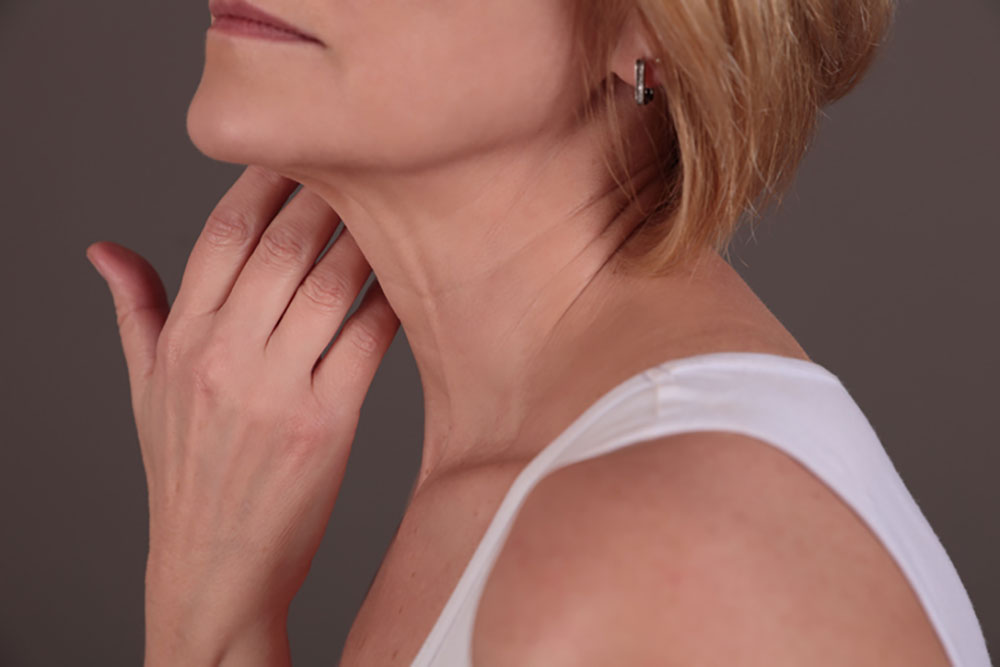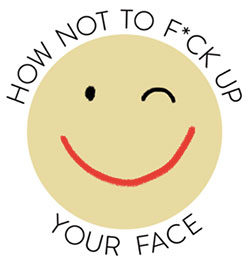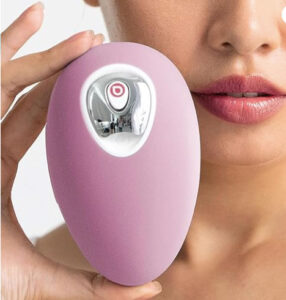By Valerie Monroe
If you’re interested in feeling happier about your appearance—especially as you age—you might like reading what she has to say about it. For more of her philosophical and practical advice, subscribe for free to How Not to F*ck Up Your Face at valeriemonroe.substack.com.
I’VE SAID THIS before: If you’re a woman and you have a face, you probably have lots of feelings about it—feelings that may change year to year, day to day, or even hour to hour. I haven’t experienced that kind of feelings change in a while, but not long after posting about my facelift journey, in which I decided a facelift was not in my future (or at least my immediate future), I had an encounter with a mirror that, well, prompted a feelings change. Few of us—certainly not me, as you’ll see—are immune to the emotional fluctuations that accompany the aesthetic challenges of aging.
On a recent evening walking back to my apartment after dinner, a friend mentioned she liked the way my hair looked in the back. I didn’t think about her comment till the next day, when I remembered I had a hand mirror stashed in the bottom of a closet. I rummaged around till I found it and used it to see the back of my head in the bathroom mirror. Cool, my hair did look nice (though I noticed I sported an Ephron’s Complaint).
As I turned from the mirror, I caught a glimpse of my profile. I hadn’t looked at my profile in a long time. A really long time—because I had no idea what’s happened to my neck from the side since, like, 1985. It was a shock. Especially as I’ve been so comfortably enveloped in a bubble of confidence about my aesthetic treatment choices.
The idea that one might be unhappy with one’s neck isn’t a strange concept to me; it’s just that I never thought about my neck that way. And the first thing that came to me was: There’s a fix for this. I pulled my neck back to see how the fix, in profile, would look. It looked better. Then I let my neck relax. Ooof.
I did that unsavory experiment a few more times till I had fully ingested the experience. Feeling slightly ill (ugh, the pungent odor of mortality), I slid the hand mirror back into the closet. And I sat down, with a cramping brain, to allow myself to feel all the feels.
But not before I spent a minute trying not to feel them. Those 60 seconds went like this: How much does a lower facelift cost? What would a lower facelift feel like? How would I feel today if I were getting a lower facelift tomorrow? What would my son think? What if I died while having a lower facelift? What if half my face were paralyzed while having a lower facelift? What if my entire face were paralyzed while having a lower facelift? Am I terrified of everything? Have all my life choices been based on fear?
I’ve probably left out a few questions, but you get the gist. Finally, as I’m always suggesting you do, I stood in front of the mirror and looked into my eyes till I could see myself beyond a sagging neck and recognize the person who was feeling terribly vulnerable and afraid. Shit, I thought, this is hard. Feeling vulnerable is hard.
I sat with that for a bit. Then I realized that on some level I want to feel vulnerable. Because it keeps me buzzing with aliveness—it reminds me to be attentive. And being attentive to getting older enriches all attentiveness, because, obviously, you seem to be gaining speed while the runway shortens and the destination becomes clearer.
So the neck business was a jolt. But a useful one.
And then there I was, back to feeling comfortable about choosing to leave my aging neck alone. Not that I intend to make a practice of looking at my profile; I put the hand mirror away, after all. But that choice, oddly enough, confirms my other aesthetic choice to have neuromodulator injections, which helps me avoid looking angry when I’m not. For me, aesthetic options are most useful when they allow my face to accurately communicate my expressions and my spirit. Which means a little Dysport, not too much, and healthy skin.
I hope hanging out here as I wrestle through my (recurring) mental cramps helps you feel a little more comfortable with your own.
To prepare us for this week’s “Ask Val” question, a reminder that when an at-home device has been “FDA cleared,” it doesn’t mean it works; it means only that it’s not likely to hurt you. It’s the FDA’s way of saying, “This device doesn’t not love you.”
“Ask Val” answers your urgent questions, Vol. 39
Wow, several hands waving eagerly in the audience today! What’s the big rush?
Q: I’ve been seeing various micro-infuser tools advertised on discount. Knowing your philosophy, I imagine you think they’re not worth the still hefty price tag, but I figured I’d ask as lots of my friends are talking about it . . .
Q: Yeah, what are these devices that claim to project a mist of treatment products deep into your face? How do they work?
Q: Micro-diffusers on sale! Half-price! Quick! Should I buy one now? And what about those microcurrent devices?
A: Calm down, people! Give me a minute to check them out. Oh, right, I see claims that one of them is developed by a couple of scientists, probably a lot smarter than I am . . . but hang on a second. One device claims to help treatment products penetrate deeper into the stratum corneum, a.k.a. the skin’s outermost layer. Deeper into the outermost layer? The stratum corneum is made up of dead skin cells. And the studies? One found that 83% of the subjects who tried the device agreed that “their skin looked younger after six weeks.” I bet 100% of us would agree that our skin looked younger after watching only 10 minutes of a film about centenarians. Oh! Here’s one of my favorite claims about a microcurrent device: It uses electricity to “turn your skin on.”
But I’m no Einstein (or Edison). So I emailed HNTFUYF DermDiva Heidi Waldorf for her opinion on one of the popular misting devices.
“I don’t know of any evidence that this device will improve results compared with other equivalent topicals on the market,” she wrote. “Also, you’re limited to using the formulations available in their pods, which is one thing for a coffee maker and quite another for topicals.”
But most important, she wrote, “A well-formulated topical will penetrate the dead cells of the stratum corneum—and some even beyond—when applied with the fingers.” Reader, she means your fingers. That you use for free.
And what about the person you know who has tried one of these pricey devices (or even a pricey serum) and is convinced it did something wonderful for her complexion? Lucky her! Did she also mention she just started sleeping eight hours a night? That she’s exercising in the fresh air every day? That she recently discovered meditation? Or maybe that she’s inclined to believe it’s doing something simply because she paid dearly for it? I wouldn’t ask her. She’s happy! Leave her alone.



